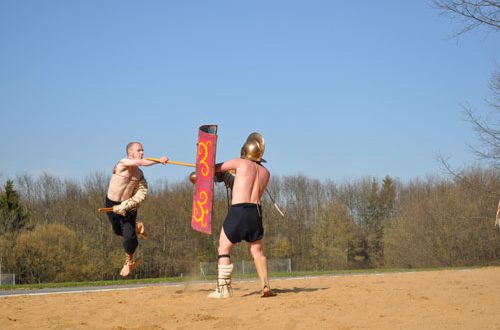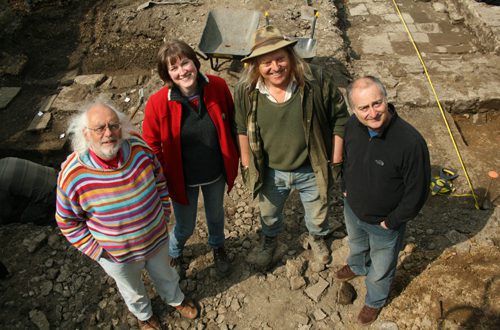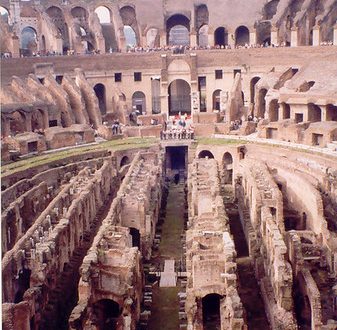 A team of international archaeologists have begun to investigate the existence of a Roman town partially submerged in a lake 20km outside stanbul. The excavation has started at Lake Kkekmece, a small inlet west of Turkey’s largest city, which is now believed to be the location of the ancient city of Bathonea.
A team of international archaeologists have begun to investigate the existence of a Roman town partially submerged in a lake 20km outside stanbul. The excavation has started at Lake Kkekmece, a small inlet west of Turkey’s largest city, which is now believed to be the location of the ancient city of Bathonea.
Little is known about Bathonea, but the site is thought to have been inhabited by humans for many millennia before it became a Greek settlement, which the Romans then built upon as they expanded their empire eastwards. It is near to the Yarmburgaz cave, which is already known to have been a refuge for neolithic humans.
Dr. engl Aydngn, head of prehistory at the archaeology department of Kocaeli University, is leading the project to uncover more of Bathonea and she believes that it could take many years to complete. While Aydngn’s initial interest in the area was due to the historical Yarmburgaz cave, she says that local people also believed that there was a minaret submerged in Lake Kkekmece.
Surveys have found that the ‘minaret’ could in fact have been the ancient city’s lighthouse which would make this only the third Roman lighthouse known in the eastern Mediterranean after those of Alexandria and Patara. An aerial survey also revealed a grid system of roads.
While Lake Kkekmece is now almost closed off from the Sea of Marmara (there is a small channel where boats can get in and out), experts believe it once had a far wider opening to the sea, giving it access to trade, while providing a sheltered harbour that could have contained more than 40 ships.
As well as the Classical-era site, an amazing collection of flintstones has also been found 500m from the site of Bathonea. These are from the neolithic age and suggest that the area west of modern-day Istanbul could be one of the earliest farming communities in Europe, according to a press release put out by one of the universities involved in the current excavation.
 I asked Dr. engl Aydngn what she and her team* of international archaeologists are expecting to find on the excavation.
I asked Dr. engl Aydngn what she and her team* of international archaeologists are expecting to find on the excavation.
BK: Are you expecting to find a Roman city, or do you think it might have earlier origins?
SA: This question needs some knowledge of our survey in the area in general and the peninsula in particular. It is too early to be conclusive, but after three years of surveying and the previous research done on the nearby prehistoric cave of Yarimburgaz, we are pretty sure that humans (homo-erectus) occupied the area from 800,000 BC. Just a single kilometre away from the harbour of Bathonea we have collected pre-pottery neolithic (PPN) naviform tools and cores, made in neolithic potteries 2 km away. We are sure that humans, at least the homo-sapiens, occupied the area for the past 15 millenniums. It is normal to assume that the Roman city was built on an earlier Greek one, which was built on older settlements.
BK: What was the importance of Bathonea during late Roman/early Byzantine times? Being so close to Constantinople, was it important to trade, religion or power, or was it simply a suburb providing supplies to the city?
SA: We have just begun the excavations and surveys so it is way too early to say anything with any certainty. There is much to discover there, but we have an assumption which will be tested with our future findings. What is evident is that Bathonea is situated on a perfect landscape with ample fresh water, fantastic forests, a very good inner harbour and at the crossroads of Asia and Europe. On the other hand Constantinople geographically was at the lands end with hardly any drinking water. So one opinion is that, while the Pax-Romana was the norm, nobody would build an important city in Constantinople. The City (with a capital C) has to be Bathonea.
But the location had an important defect: it was difficult to defend. Once the power of the Roman empire waned, the area proved to be too vulnerable to barbarian attacks. And the early Byzantines [during the time of Constantine I in 310 AD] were forced to move their City to Constantinople, built in a place which could be defended easily with a single stretch of wall. But they had to build the biggest water systems of the ancient times with 282 km of aqueducts and huge cisterns which are still visited with awe by the tourists today.
A second opinion is that Bathonea was an ancient Greek city with grid plan which then grew in Roman times until the sixth century AD. According to ancient sources there was a big earthquake in 557 AD in stanbul. The earthquake destroyed the districts around Kkekmece Lake reducing buildings to their foundations. Our geologists surmise that might the lagoons mouth may have been covered after this event, closing Bathonea off from the sea trade. This is a possible way in which the city could have been abandoned.
BK: How did you become aware of the excavation area? Are reports of a minaret visible in the lake true and was this a starting point?
SA: In 2007, I got permission for an archaeological survey for the western side of Istanbul. The famous Yarimburgaz cave was nearby and its prehistoric occupants used it as a base for hunting and took advantage of the favourable geography. So it was the most logical place to start the survey. During this first season the area proved to be much more that our wildest expectations. While the season was ending we were already aware of PPN findings, very old stone tools (400,000 years?) and much of the harbours initial walls. In the 2008 season the survey focused more on the tip of the peninsula and we carried out a number of geophysical studies which supplied further architectural evidence.
In 2008 a team also carried out an ethno-archaeological survey, talking with the elders of the villages. A visible minaret was always one of the talking points and there was really something visible in the middle of the lake. Some local people told us that when they were children they used to swim out to the building in the middle of the lake and there were marble stares that they used to sit on.
 Our underwater team headed by Hakan niz, from the East Mediterranean University, searched the ‘minaret’ and found a possible break water and the layout of two different square shaped buildings from two different periods in the water. We are pretty sure that they are the remains of a lighthouse at the entrance of the harbour. It seems that there was much more at the site as late as the beginning of the twentieth century. It is the third discovered ancient lighthouse till now after Alexandria and Patara.
Our underwater team headed by Hakan niz, from the East Mediterranean University, searched the ‘minaret’ and found a possible break water and the layout of two different square shaped buildings from two different periods in the water. We are pretty sure that they are the remains of a lighthouse at the entrance of the harbour. It seems that there was much more at the site as late as the beginning of the twentieth century. It is the third discovered ancient lighthouse till now after Alexandria and Patara.
BK: Do you think this site may emerge to be of a similar size to Ephesus, for example?
SA: We know that the initial findings are scattered over a very wide area. The lakes east coast is also full of remains, and there are still kilometres (more than 10.5km) of ancient walls along the shores. However, Bathonea was built on a geography quite different to that of ancient Ephesus and they are not at all comparable.
BK: Is the site of Bathonea linked to any historical figures or mentioned in historical texts?
SA: Yes there are some mentions of Bathonea in historical texts. We dont know yet of any important historical figures. However, there are a number of ordinary people known from Bathonea. There are some inscribed sarcophagi and marble inscriptions at the Istanbul Archaeological Museums.
* Dr. engl Aydngn is working with an international team of experts including universities from Turkey, Cyprus, England, the Netherlands, France, the Czech Republic and Germany. Also working on the excavation are:
- Dr. Emre Gldoan from stanbul University,
- Prof. Dr. Volker Heyd from Bristol University,
- Umran Yugruk Planken from La Hey University and
- Hakan Oniz, head of the underwater team from Cyprus East Mediterranean University.
The project is supported by the municipalities of Kkekmece, Avclar and Silivri.
All photos courtesy of Dr. engl Aydngn.



